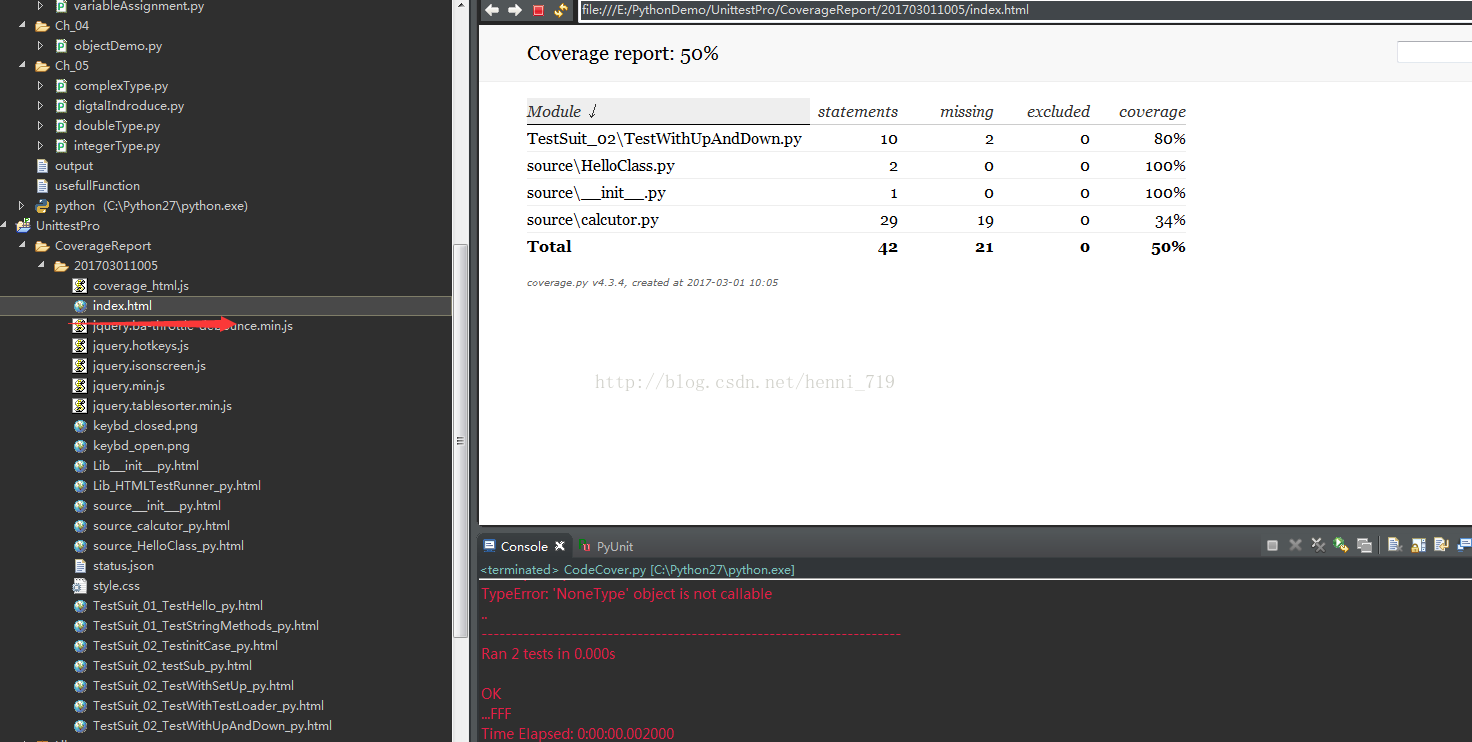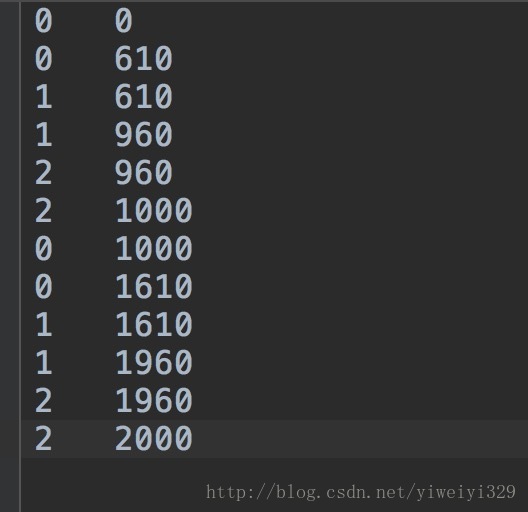unittest+coverage单元测试代码覆盖操作实例详解
基于上一篇文章,这篇文章是关于使用coverage来实现代码覆盖的操作实例,源代码在上一篇已经给出相应链接。
本篇文章字用来实现代码覆盖的源代码,整个项目的测试框架如下:

就是在源代码的基础上加了一个CodeCover.py文件,执行该文件会在目录CoverageReport生成相应的覆盖报告。如下是CodeCover.py的源码:
#coding=utf8
import os
import time
def findTestWithPath():
current_dir=os.getcwd()
folderName=os.listdir(current_dir)
#print folderName
#获取到测试文件所在目录
TestSuit=[suite for suite in folderName if not suite.find("TestSuit")]
#用来保存测试文件
testfile=[]
withPathFile=[]
for suite in TestSuit:
#获取测试目录下的所有测试文件
testfile=testfile+os.listdir(".\\"+suite)
for withPath in testfile:
withPath=current_dir+"\\"+suite+"\\"+withPath
withPathFile.append(withPath)
del testfile
#把testfile中的py文件挑选出来
withPathFile=[name for name in withPathFile if not "pyc" in name]
#print testfile
print withPathFile
return withPathFile
def codeCoverage():
now = time.strftime("%Y%m%d%H%M")
htmlReport=os.getcwd()+"\\"+"CoverageReport"
htmlCmd="coverage html -d " + htmlReport +"\\"+now
for pyfile in findTestWithPath():
runPyCmd="coverage run " + pyfile
if os.path.exists(htmlReport) :
os.system(runPyCmd)
os.system(htmlCmd)
else:
os.mkdir(htmlReport)
os.system(runPyCmd)
os.system(htmlCmd)
if __name__=="__main__":
codeCoverage()
运行结果图:

以上就是本文的全部内容,希望对大家的学习有所帮助,也希望大家多多支持【听图阁-专注于Python设计】。


